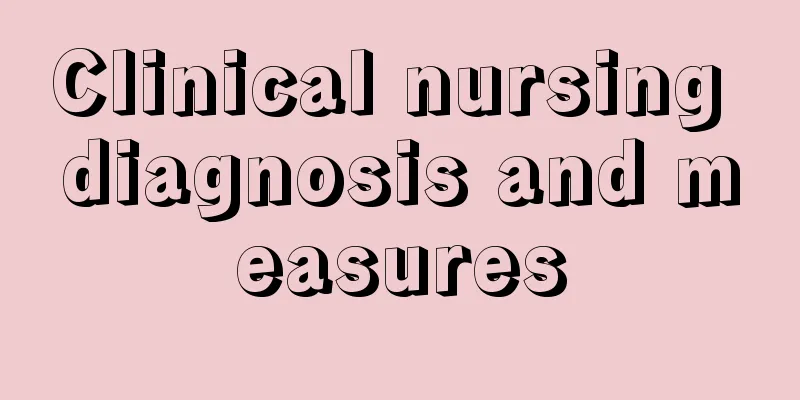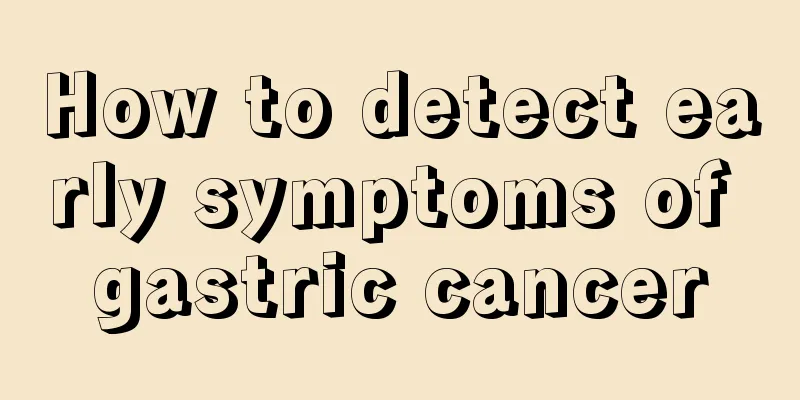Clinical nursing diagnosis and measures

|
The pollution in the environment where people live is becoming more and more serious. Due to the influence of the environment, people's bodies become weaker and they are prone to illness. Therefore, some basic diagnostic methods and measures in clinical nursing are some knowledge we should understand at this stage. Don't wait until you get sick to understand, it will be too late. Don't rush to seek medical treatment when you are sick. Analyze the symptoms carefully and prescribe the right medicine for the treatment. Let’s talk about clinical care and diagnostic methods. Method 1: Disordered sleep patterns. The main symptoms are difficulty falling asleep, intermittent sleep, early awakening, and fatigue. 1. Create an environment that is conducive to sleep and rest, such as: (1) Keep the sleeping environment quiet and avoid loud noises. (2) Close doors and windows and draw curtains when the patient is sleeping. Use a wall lamp when sleeping at night. (3) Maintain a suitable temperature in the ward and ensure that the blankets are comfortable. 2. Try to satisfy the patient's previous sleeping habits and sleeping methods. 3. Establish a more regular schedule of activities and rest that is similar to the previous one. 4. Plan nursing activities in an orderly manner to minimize interference with the patient's sleep. 5. Provide measures to promote sleep. Method 2: Body temperature is too high. Nursing measures: 1. Choose the appropriate cooling method according to the specific situation. 2. Rest in bed and limit your activity. 3. Measure body temperature, pulse and respiration every 4 hours. Measure or record any temperature that rises or drops suddenly. 4. Keep the indoor air fresh, ventilate twice a day, 15-30 minutes each time, and keep warm. 5. Encourage patients to drink plenty of water and give them light, easily digestible, high-calorie, high-protein liquid or semi-liquid food. 6. After sweating, pay attention to treatment or keep warm in time. 7. When the body temperature exceeds 38.5, give physical cooling. Measure the body temperature half an hour after physical cooling and record it on the temperature sheet. 8. Give antibiotics and antipyretics as prescribed by the doctor and observe and record the cooling effect. 9. Administer intravenous fluids as directed by your doctor. Method three, anxiety? Nursing measures: 1. Recognize the patient's anxiety, acknowledge the patient's feelings, and express understanding to the patient. 2. Take the initiative to introduce the environment to the patient to eliminate the patient's sense of unfamiliarity and nervousness. |
<<: Can you remove odor by rubbing alcohol under your armpits?
>>: Can the separation of nails from flesh be restored?
Recommend
Can osteosarcoma be cured
Osteosarcoma is a malignant bone tumor that is co...
What are the symptoms of liver cancer in the last month of advanced stage?
The symptoms of advanced liver cancer in the last...
How to treat advanced bladder cancer?
The treatment of advanced bladder cancer is diffi...
What is the best way to remove phlegm?
When phlegm appears in the throat, people will fe...
Treatment methods for primary liver cancer
Currently, chemotherapy is mainly based on oxalip...
What are the dangers of hair transplantation? Be sure to be on guard!
With the development of the medical field, hair t...
What are the dietary precautions for prostate cancer? What are the precautions for prostate cancer patients?
Prostate cancer is a male disease, and its incide...
How to wear glasses for myopia and presbyopia
There used to be a saying that if you develop myo...
Can urine routine test detect kidney cancer?
Hematuria is a common symptom of kidney cancer. H...
How to fix dentures
Having problems with your teeth is a very painful...
Why did my belly suddenly get bigger
Many women may have experienced this phenomenon, ...
Preventing Gallbladder Cancer in Daily Life
We know that cancer is constantly harassing us. W...
How to remove melanin deposits on the knees?
Many people hope to have fair and flawless skin, ...
What are the symptoms of advanced liver cancer? Pay attention to these four points
When liver cancer develops to the late stage, pat...
What is the difference between obstructive pneumonia and lung cancer?
What is the difference between obstructive pneumo...









